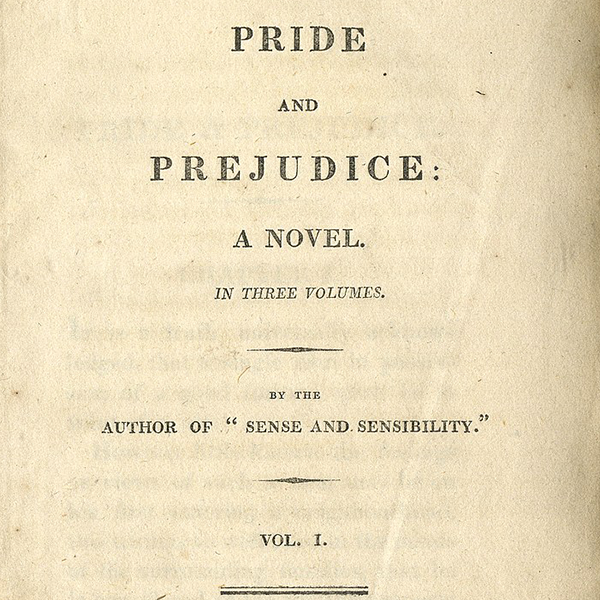
Pride and Prejudice
Pride and Prejudice is a novel by Jane Austen, first published in 1813.
Jane Austen (b. 1775- d. 1817)
Jane Austen was born in Steventon, England on 16th of December in 1775. She is a much celebrated and studied English author, best known for her romantic novels such as Sense and Sensibility (1811), Pride and Prejudice (1813), Mansfield Park (1814), and Emma (1815). Her final two novels, Persuasion and the gothic satire Northanger Abbey were published after her death in 1817. Austen’s work is characterised by a witty, comedic and incisive style that reflects the morals and manners governing familial, gendered and social relations among the gentry in early nineteenth century England.

Pride and Prejudice
Pride and Prejudice is a novel by Jane Austen, first published in 1813. The story follows the main character Elizabeth Bennet as she deals with issues of manners, upbringing, morality, education, and marriage in the society of the landed gentry of early 19th-century England. Elizabeth is the second of five daughters of a country gentleman living near the fictional town of Meryton in Hertfordshire, near London. Although the story is set at the turn of the 19th century, it continues to fascinate modern readers. It has become one of the most popular novels in English literature. Modern interest in the book has resulted in a number of film and television adaptations and an abundance of novels and stories imitating Austen’s memorable characters or themes. To date, the book has sold some 20 million copies worldwide.
Other Notable Works by Austen:
Sense and Sensibility (1811)
Mansfield Park (1814)
Emma (1815)
Persuasion (1817)
Northanger Abbey (1817)
To read more about the fascinating life and work of Jane Austen, please see here.

Edition
The edition used for this analysis is the Project Gutenberg version released May 9th, 2013.
Image Credits:
From Morris, Francis Orpen. The County Seats of the Noblemen and Gentlemen of Great Britain and Ireland. Vol. 1, 2. (Vol. 3-5. A Series of Picturesque Views of Seats of the Noblemen … of Great Britain and Ireland. With descriptive letterpress.) London, Longmans and Co., 1866. Digitised by the British Library Labs.
Image from a watercolour by James Andrews of Maidenhead based on an unfinished work by Cassandra Austen. Engraving by William Home Lizars. A Memoir of Jane Austen by her nephew J. E. Austen-Leigh, Vicar of Bray, Berks. London: Richard Bentley, New Burlington Street, Publisher in Ordinary to her Majesty, 1870. Link: Wikimedia.
Title page from the first edition of the first volume of Pride and Prejudice, 1813. Source Archive: Lilly Library, Indiana University; Original publication: Austen, Jane. Pride and Prejudice. London: T. Egerton, 1813. Link: Wikimedia.

Funding
This research was conducted with the financial support of Science Foundation Ireland [12/RC/2289_P2] at Insight the SFI Research Centre for Data Analytics at University College Dublin.